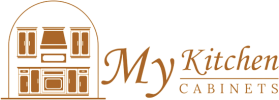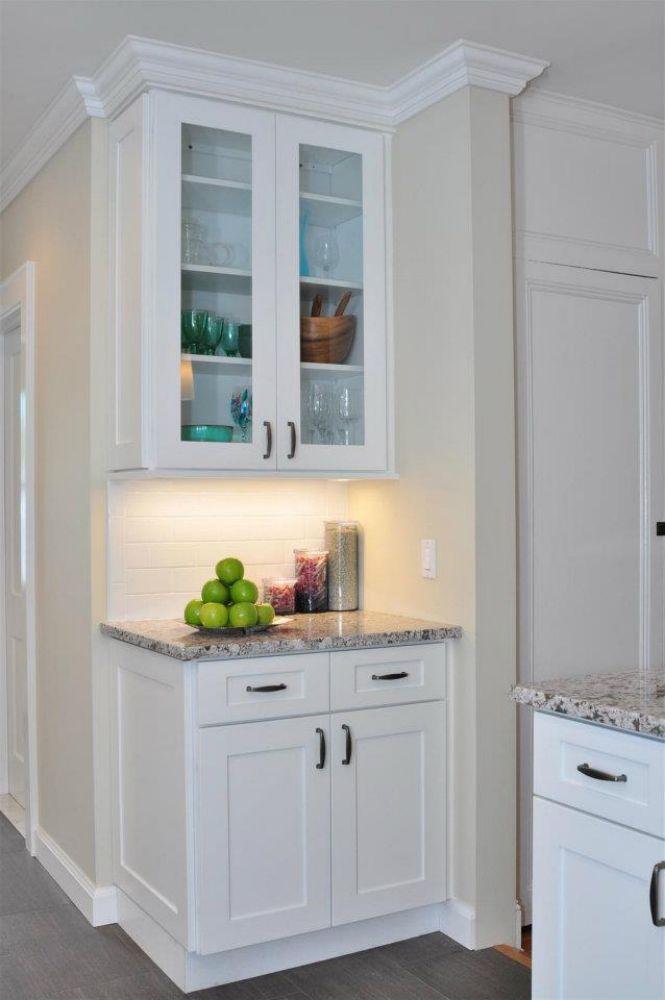Exploring the Pros and Cons of Two-Tone Kitchen Cabinets
In modern kitchen design, two-tone cabinets have become one of the most popular and stylish trends. This design approach combines two different colors or finishes for your cabinetry—typically one for the upper cabinets and another for the lower ones—to create depth, contrast, and personality in your kitchen.
When chosen thoughtfully, two-tone kitchen cabinets can completely transform a space, making it appear more dynamic, open, and customized. However, this trend isn’t for everyone. While it offers a wealth of design benefits, it can also present challenges if not executed properly.
In this comprehensive guide by My Kitchen Cabinets, we’ll explore the advantages and disadvantages of two-tone cabinetry, how to make it work in various kitchen styles, and what design principles to follow for the perfect balance.
What Are Two-Tone Kitchen Cabinets?
Two-tone kitchen cabinets involve using two distinct colors, stains, or finishes within the same kitchen space. The most common configuration places lighter cabinets on the top and darker ones on the bottom, but there are endless variations.
Popular Two-Tone Cabinet Styles Include:
-
Light upper cabinets with dark lower cabinets (e.g., white and navy blue).
-
Contrasting island colors that differ from the perimeter cabinetry.
-
Wood-tone lower cabinets paired with painted uppers.
-
Black and white combinations for modern or transitional kitchens.
-
Soft pastels mixed with natural woods for contemporary warmth.
This design approach creates a layered look that adds personality, depth, and visual interest without overwhelming the space.
The Evolution of Two-Tone Cabinet Design
Historically, kitchen cabinetry was uniform—one color, one finish, one texture. However, as open-concept living spaces became more popular, designers started incorporating contrast and variation to break up monotony and define zones.
Today, two-tone cabinets are not just a trend—they’re a design strategy used by professionals to enhance the balance, proportion, and flow of a kitchen. They work beautifully across multiple design styles, from modern minimalism to farmhouse charm.
Why Two-Tone Kitchen Cabinets Are Popular
Homeowners and designers alike love two-tone cabinetry because it combines practicality with creativity. The approach allows for more customization without the cost of fully custom-built kitchens.
Here’s why they’ve become a go-to choice for many remodeling projects:
-
Adds dimension and visual appeal.
-
Creates contrast that enhances focal points.
-
Allows for balance between bold and neutral colors.
-
Helps define different areas in open layouts.
-
Makes smaller kitchens appear larger.
With the right balance of tones and finishes, two-tone cabinets can create a high-end, magazine-worthy aesthetic at a reasonable cost.
The Pros of Two-Tone Kitchen Cabinets
Let’s look at why homeowners and designers are embracing this beautiful cabinetry trend.
1. Enhances Visual Interest and Depth
A single-color kitchen can sometimes feel flat or monotonous. Two-tone cabinets introduce contrast and variation, creating a more engaging visual experience.
For example, pairing white upper cabinets with navy or espresso lower cabinets adds structure and interest to the space. The contrast draws the eye and gives the kitchen more personality.
2. Defines Different Zones in an Open Layout
Open-concept kitchens often flow into dining or living areas. Using two-tone kitchen cabinets can help subtly separate zones without the need for walls.
For instance, a darker cabinet color on the island can anchor the kitchen visually, distinguishing it from adjoining areas while maintaining flow and cohesion.
3. Creates an Illusion of Space
Lighter cabinets on top and darker ones on the bottom are not just stylish—they’re strategic. The lighter upper tone makes the space feel airy and open, while the darker base grounds the design.
This balance helps small or narrow kitchens feel larger and more balanced.
4. Allows Personalization Without Overwhelm
If you love color but are hesitant to commit to an all-blue or all-green kitchen, two-tone cabinets let you incorporate bolder hues in moderation.
For example:
-
Use deep forest green or navy blue on your lower cabinets.
-
Keep the upper cabinets in classic white for a timeless pairing.
This lets you express personality while maintaining a sophisticated, balanced look.
5. Highlights Architectural Features
Two-tone cabinetry naturally draws attention to unique elements like kitchen islands, range hoods, or built-in pantries. By contrasting colors, you can emphasize architectural focal points, giving your kitchen a designer-quality finish.
6. Blends Multiple Materials Seamlessly
Mixing finishes—such as natural wood and painted surfaces—adds texture and warmth. This approach brings together modern and rustic aesthetics, making the kitchen feel layered and curated.
For instance, pairing oak lower cabinets with white-painted uppers creates a cozy yet contemporary farmhouse vibe.
7. Increases Home Resale Appeal
Two-tone kitchens appeal to modern buyers because they look custom and high-end. They’re trendy but also versatile enough to suit a variety of tastes.
A well-designed two-tone kitchen can make your home stand out in real estate listings and potentially boost resale value.
The Cons of Two-Tone Kitchen Cabinets
While two-tone cabinetry can elevate your kitchen, it’s not without drawbacks. Being aware of these potential downsides ensures you make the right design choices for your space.
1. Risk of Visual Imbalance
If not planned carefully, two-tone designs can make a space feel disjointed or cluttered. For example, pairing overly contrasting colors—like black and bright yellow—can overwhelm smaller kitchens.
Maintaining balance is key. Always ensure one tone acts as the dominant (usually the lighter color) and the other as the accent.
2. Challenging Color Coordination
Choosing two colors that complement each other and your countertops, backsplash, and flooring can be difficult.
To avoid clashing tones:
-
Stick to a consistent undertone (warm or cool).
-
Test paint or finish samples in natural and artificial lighting.
-
Consult with a designer to ensure cohesive coordination.
3. Potential for Trend Fatigue
While stylish now, trends evolve. A bold two-tone combination might feel dated in a decade, especially if it’s very high-contrast or unconventional.
Opting for timeless color schemes—like white and gray or wood and cream—helps ensure long-term appeal.
4. More Complex Installation and Finishing
Because two-tone cabinetry involves multiple finishes, it requires more attention to detail during fabrication and installation. If done incorrectly, transitions between colors may appear uneven or poorly executed.
Working with professionals, like those at My Kitchen Cabinets, ensures precise craftsmanship and flawless execution.
5. Difficult to Match with Existing Decor
If your kitchen connects to other rooms, maintaining a cohesive flow throughout your home can be tricky when using bold two-tone cabinets.
To maintain visual harmony, coordinate the cabinet hues with other elements in adjoining spaces, such as wall colors or flooring transitions.
Popular Color Combinations for Two-Tone Kitchen Cabinets
When planning your two-tone kitchen, it’s helpful to look at tried-and-true color combinations that have stood the test of time.
1. White and Navy Blue
Classic and elegant, this pairing offers coastal charm and crisp contrast. White upper cabinets open up the space, while navy lowers add drama and sophistication.
2. Gray and White
Perfect for modern or transitional kitchens, this neutral combination creates a sleek, timeless appearance that works well with stainless steel appliances and marble countertops.
3. Black and Natural Wood
This duo brings warmth and depth. The rich wood tones soften the starkness of black cabinets, achieving a modern yet inviting aesthetic.
4. Cream and Sage Green
Soft and calming, this palette evokes an organic, earthy feel—ideal for farmhouse or cottage-style kitchens.
5. Charcoal and Warm Oak
For contemporary spaces, pairing dark charcoal with natural oak achieves balance between boldness and warmth.
Design Tips for Two-Tone Cabinet Success
1. Follow the “Lighter on Top” Rule
This classic approach ensures your kitchen feels open and balanced. The darker lower cabinets ground the space, while lighter uppers enhance visual height.
2. Coordinate with Countertops and Backsplash
Your countertop serves as the middle ground between two cabinet colors. Choose a surface that ties both tones together—for instance, a quartz countertop with subtle veining that echoes both hues.
3. Use Hardware as a Bridge
Hardware finishes like brass, nickel, or matte black can unify your design. Choose a finish that complements both cabinet colors for cohesive elegance.
4. Limit to Two Tones
Adding a third cabinet color often disrupts harmony. Stick to two tones and let textures or materials provide additional depth instead.
5. Incorporate a Statement Island
Using a contrasting color on your kitchen island is a great way to achieve a two-tone look without overcommitting.
When to Avoid Two-Tone Kitchen Cabinets
While beautiful, two-tone cabinetry might not suit every home or layout.
Avoid it if:
-
Your kitchen is too small and lacks natural light, as contrasting tones can make it feel cramped.
-
You prefer minimalist, uniform designs.
-
You’re working with limited renovation budgets, as dual finishes can increase costs slightly.
If simplicity and longevity are your main goals, single-color cabinetry may be the better route.
How to Maintain and Clean Two-Tone Cabinets
Maintaining two-tone cabinets is similar to caring for traditional cabinetry—just with extra attention to color preservation.
Maintenance Tips:
-
Clean with mild soap and warm water regularly.
-
Avoid harsh chemicals that may dull finishes.
-
Wipe spills immediately to prevent staining lighter tones.
-
Use a microfiber cloth to keep darker cabinets smudge-free.
-
Reapply finish or sealant as needed for wood cabinets.
Proper upkeep ensures both cabinet tones remain vibrant and beautiful over time.
Why Choose My Kitchen Cabinets for Two-Tone Designs
At My Kitchen Cabinets, we specialize in helping homeowners create stylish, functional, and personalized kitchens. Our expert designers can help you:
-
Select the ideal two-tone color palette.
-
Match finishes, countertops, and backsplashes seamlessly.
-
Customize cabinet materials and hardware to fit your design goals.
-
Ensure flawless installation with professional craftsmanship.
Our wide range of cabinet styles, from Shaker to modern slab, ensures that your two-tone kitchen reflects your personal style while maintaining long-term beauty and value.
Conclusion
Two-tone kitchen cabinets are more than a passing trend—they’re a creative and versatile way to express your style and enhance your kitchen’s visual appeal. They offer the perfect balance between classic design and modern innovation, allowing you to blend colors, textures, and materials to create a one-of-a-kind space.
The advantages—such as added dimension, personality, and resale appeal—often outweigh the challenges, especially when designed thoughtfully. However, success depends on proper color selection, proportion, and attention to balance.
At My Kitchen Cabinets, we make it easy to design, customize, and install two-tone cabinetry that complements your home’s architecture and your personal taste. Whether you prefer soft neutrals, rich woods, or bold contrasts, we’ll help you achieve a look that feels both timeless and unique.
Investing in a two-tone kitchen is an investment in creativity, harmony, and everyday enjoyment—proof that great design doesn’t just look good; it feels good too.
FAQs
1. What are two-tone kitchen cabinets?
Two-tone cabinets use two different colors or finishes in one kitchen—typically one for upper cabinets and another for lower cabinets—to create contrast and depth.
2. Are two-tone cabinets more expensive?
They can be slightly more costly due to multiple finishes and added design planning, but many homeowners find the added style and resale value worth the investment.
3. What color combinations work best for two-tone kitchens?
Popular pairings include white and navy, gray and white, black and natural wood, or cream and sage green. These timeless combinations create visual balance.
4. Do two-tone cabinets make small kitchens look smaller?
Not necessarily. In fact, using lighter uppers and darker lowers can make small kitchens appear larger and more open.
5. Why choose My Kitchen Cabinets for a two-tone remodel?
My Kitchen Cabinets offers expert design consultation, premium-quality materials, and customized solutions to ensure your two-tone kitchen looks stunning, functional, and built to last.
Read: How do I plan a kitchen remodel budget with kitchen cabinets as the focus?
Read: How do I compare prices across different kitchen cabinets suppliers?

